The Invasion of Russia
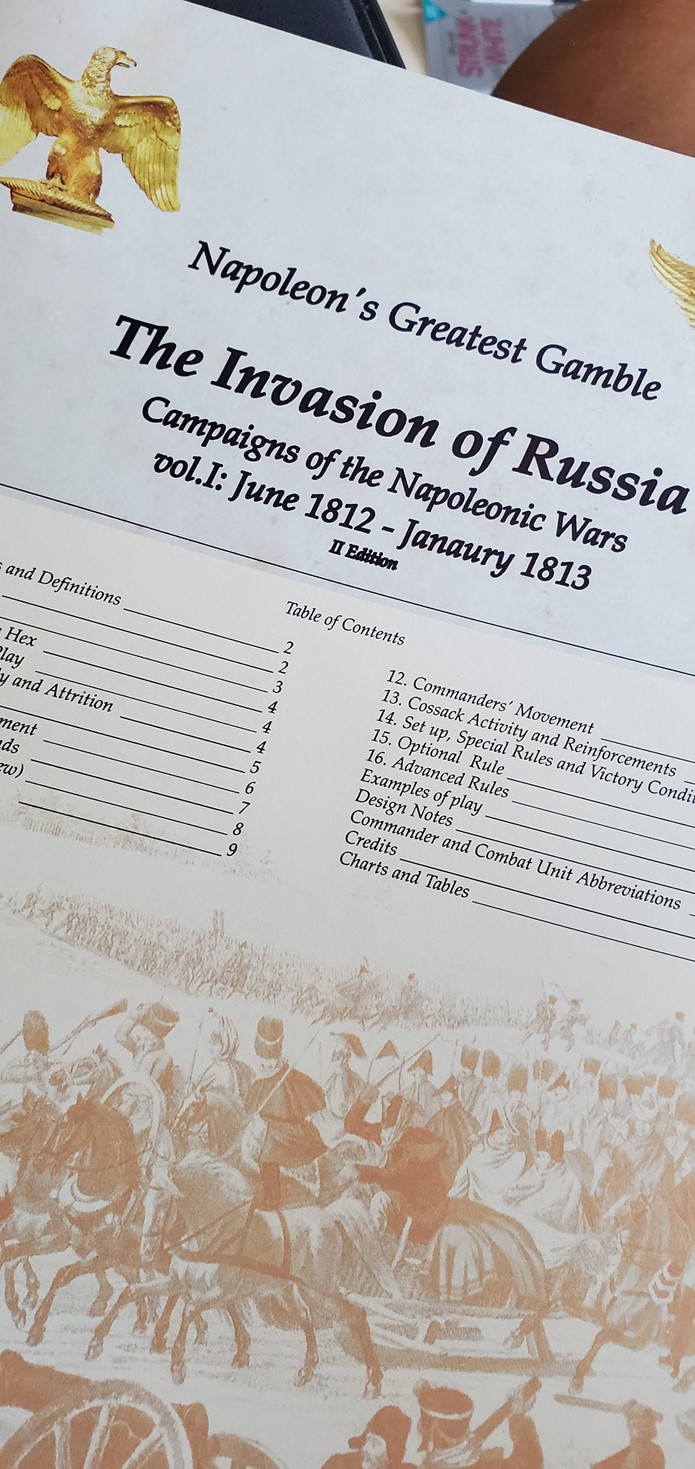
This is a Steve Pole design, now OOP. It is volume 1 of II. The second deals with actions in 1813, it is still available at www.italianwars.net

There are a few interesting ideas here with this Divisional scale system that uses 50 km hexes and 2 week turns.
First off is supply.
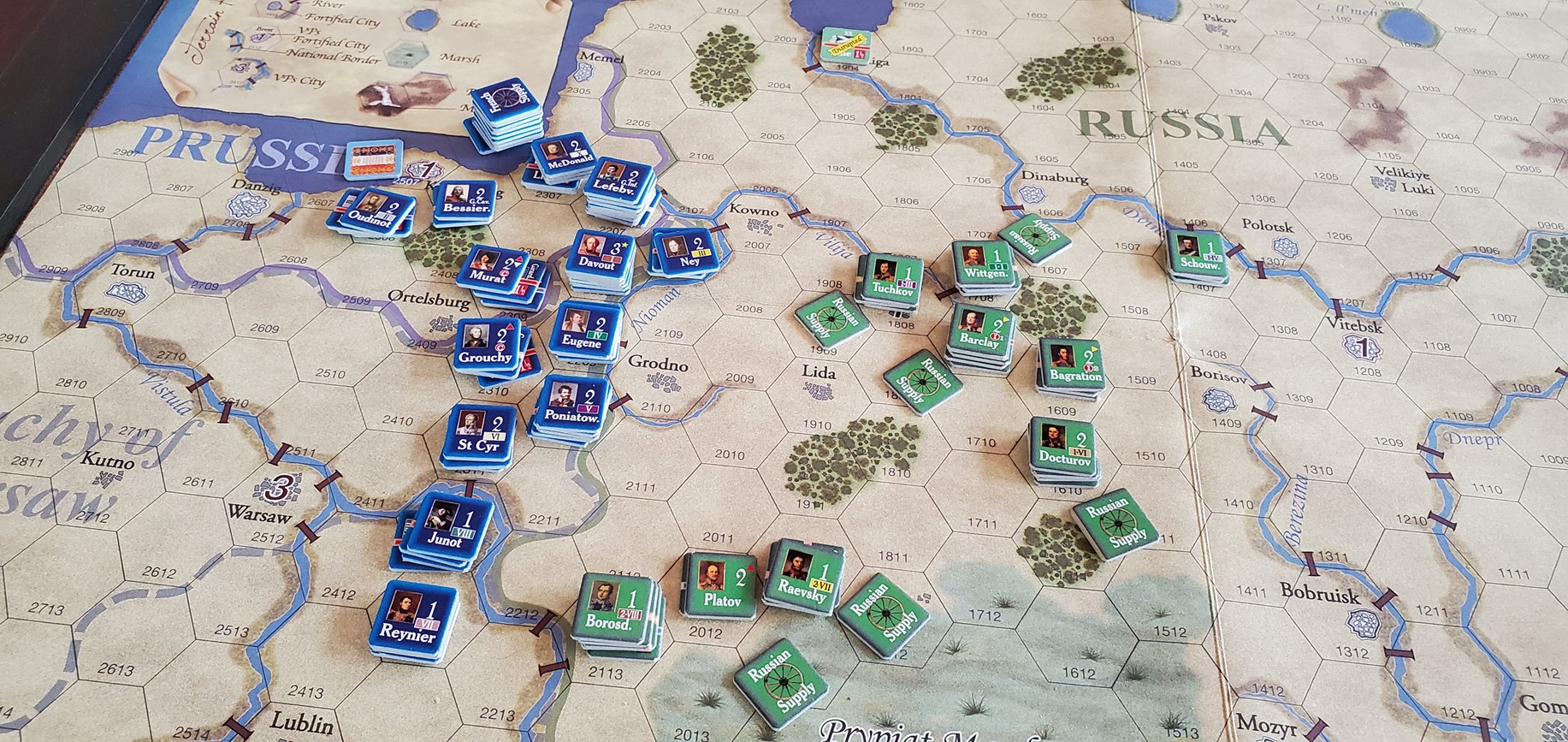
Each side takes turns placing tokens on the map to represent Depots if there are none, then they place supply trains that will allow a stack of units with a commander to recover from disruption and if another is spent then move.
Tokens are limited and the French see a reduced amount over time which of course becomes problematic for them as they push ever deeper into the vastness of Russia. This forces a concentration of units and prevents a two or more prong strategy later in the game. This forces a daisy chain effect, that requires juggling , and reduce the offensive capability of the French.
The second is combat.
Combat is best explained by example.

Napoleon is planning on attacking Barclay.
There are a finite # of command chits or points which can be spent on attacks. Once you allocate one or more to a potential attack you roll a die, add the Command Rating to the die roll and the # of chits you spent and seek a number seven or greater. This means your attack goes ahead.
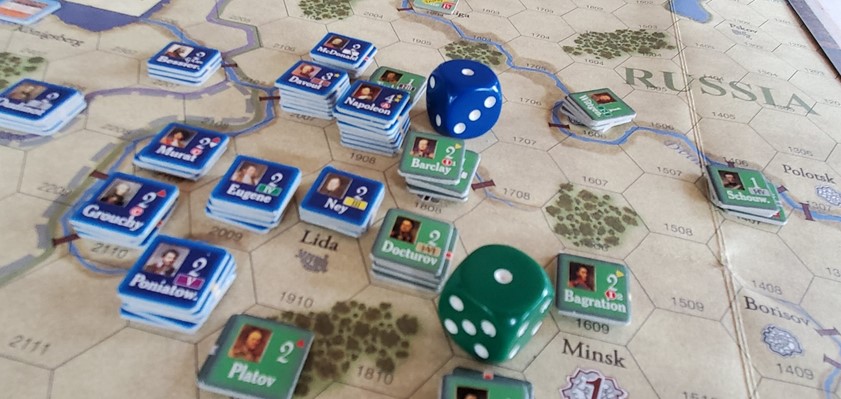
However if you roll a raw one. The attack is cancelled and you lose that point. Similar to the process for allocating supply both sides take turns attacking. In the case above the Russians also fail to go ahead.
Nappy tries again. This time he succeeds rolling a 6+4 for the leadership and plus 1 for the command point, a total greater than 7. Note assisting or supporting stacks also must roll to activate to support. nice dynamic there; ‘did they receive the order in time etc’.
Napoleon has the Imperial Guard with him. He has the maximum stacking value in the hex of 6. They are all veterans which means the ‘consume’ only 1 stacking point [ line consume 1.5 and conscripts 2 stacking points].
Each combat unit has a combat value of 1. So, Napoleon starts with a CF of 6. He adds +4 due to having combined arms [Cav & Arty ]. He then adds his command value of 4 and the bonus for just being Napoleon which means 3 units can add +1 to their combat value…lets call it elan shall we!
The adjacent units support the attack and because a commander is with them it adds another 4. All told we have 21 factors. + 1d6 [2] for a net of 23.
The Russians muster up 3+2 for combined arms [just arty]+4 for support and a 1d6 roll of 3. A net 12.
Phew.
Napoleon has more [points, factors etal] than the Russian leader, so he wins.
While he inflicted a net difference of 11, the max hits on a formation is 6. +1 for pursuit if Cav are involved in the attack.
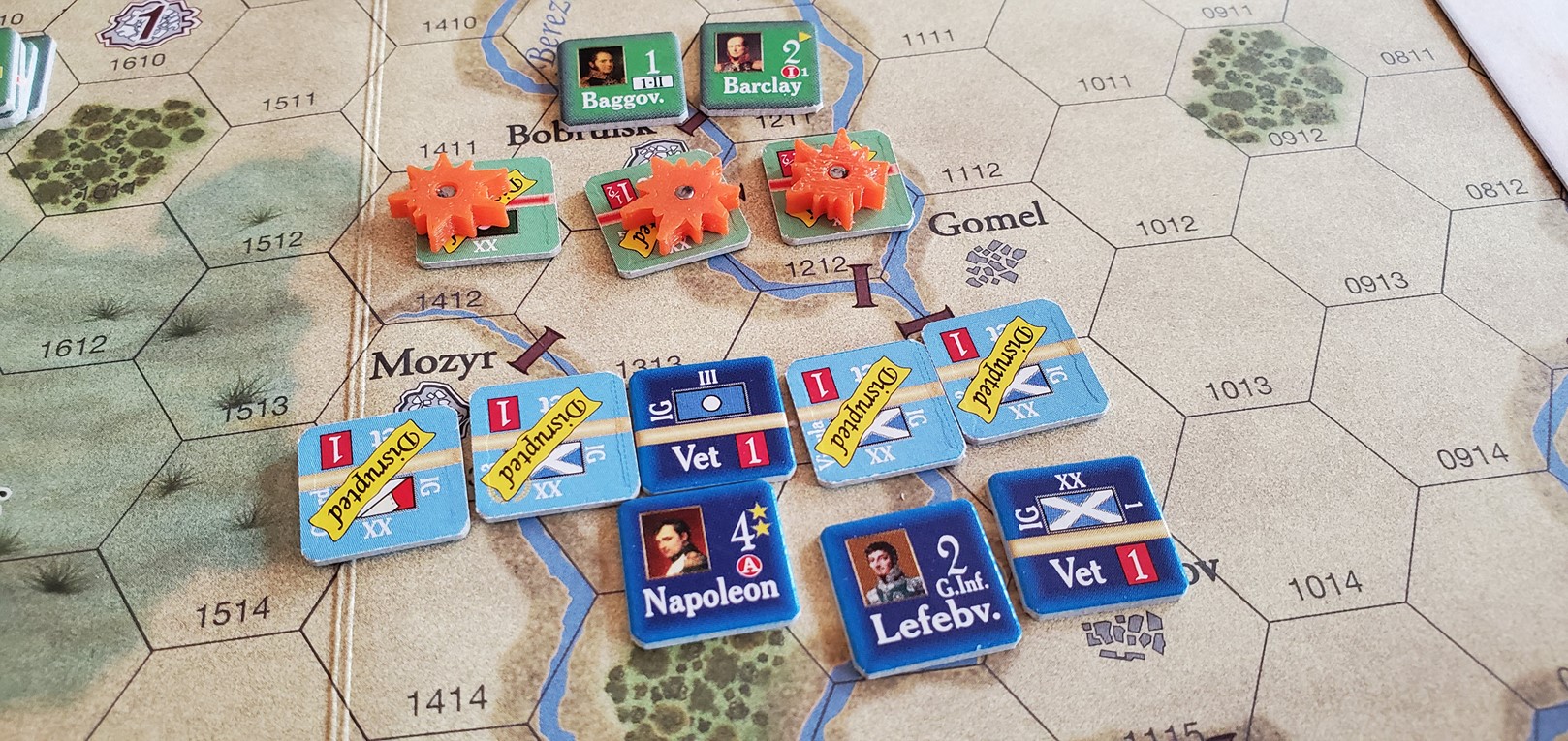
6 hits, a disrupt per unit and another hit each eliminate the entire Corps….ouch.
However, here is the catch for Nappy. After that roaring success he must now assess his losses. The max hits was 6. He takes 3 hits or 50% of the losses inflict AND rolls a 1d6. On a 5 he will add one additional hit, other things happen for other numbers including no extra hits.
So of course he adds 1. The French take 4 hits.
Win, but not by too much? But you want decisive victories for VPs… so you have to win big. Therefore, you must attrit yourself. A tough decision to make!
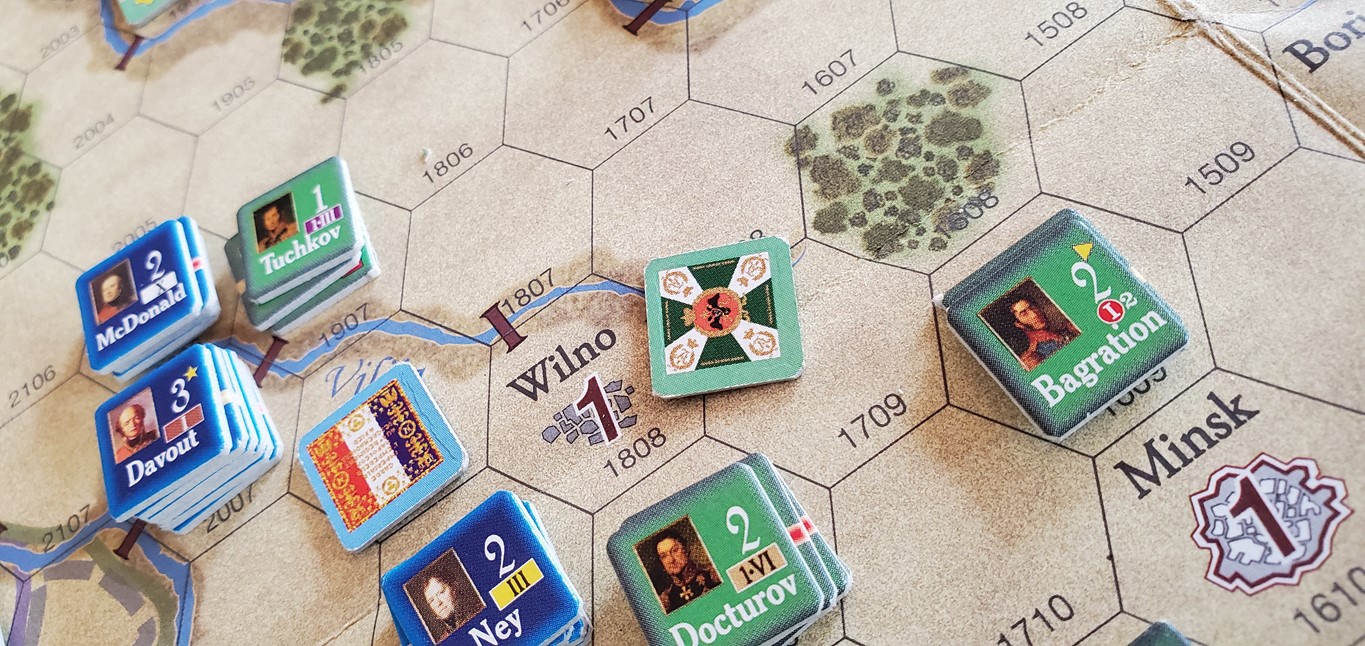
Now the good news is we can advance. But only the non-disrupted units…drats. If I split them that will be another Supply Train, I shall have to spend extra next turn . Then my best force is spread out. So I elect not to advance.
So, we can quickly see that there is some smart planning and thinking that is going to be required for both sides as they plan their strategies to survive.
All the French must do is have more VPs than the enemy at game end. The Russkies start with 12 VPs that are reduced every time they lose a battle decisively. So in this case we move the track down to 11.
We can see how this will influence the desire to fight already.
Meanwhile on the map there are 13 VPs to be had in Russia theat I could see. Moscow and St Petersburg are worth 3. The rest of the VPs are scattered around the maps in 1’s, all the obvious locations – Riga, Minsk, and towns along the approach to Moscow etc. Some VPs reside in Poland – Warsaw.
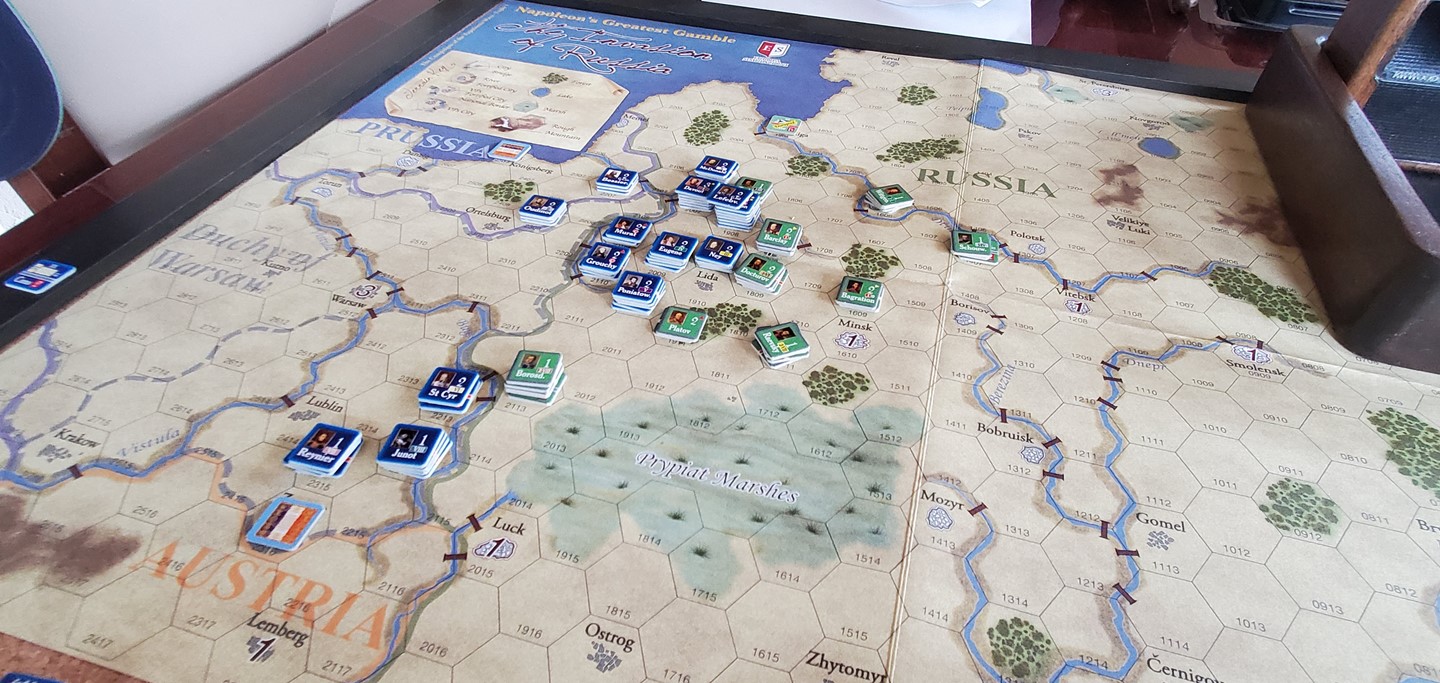
The third interesting notion, if we count the impact of combat on victory as part of combat is attrition from movement.
While each unit ‘can’ move 3 hexes normally, if it does it rolls for attrition. A bad roll here can see a division eliminated.. Using forced march only heightens that risk. So really in normal clear weather movement is 2 to be safe!
With no straggler recovery option at this scale I find this a bit hard to stomach. But lets see how that aspect plays out.
Enjoying the play. It is obviously a well produced module and has a pleasing aspect to the eye. Good stuff.